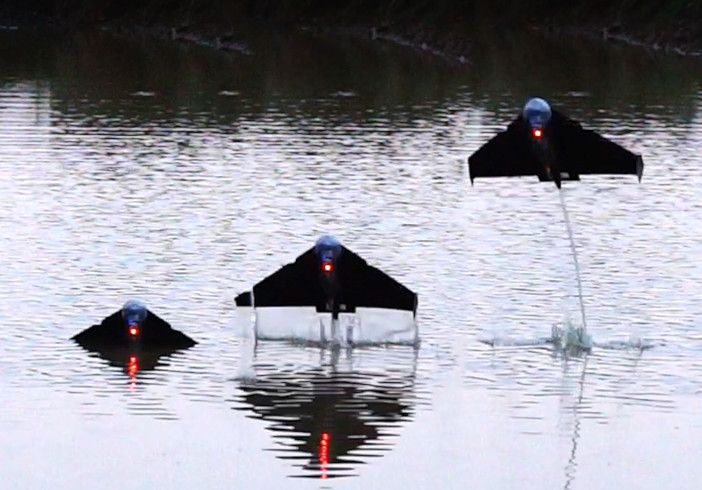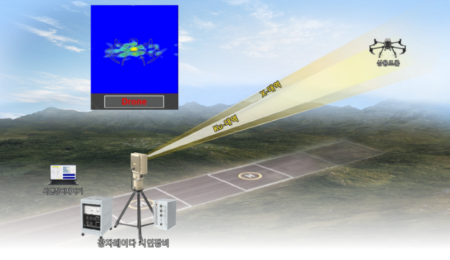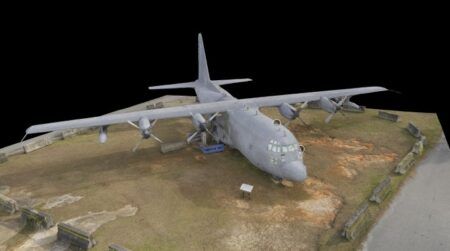Engineers at Imperial College London have developed a bio-inspired robot that uses water from the environment to create a gas and launch itself from the water’s surface.
The robot, which can travel 26m through the air after takeoff, could be used to collect water samples in hazardous and cluttered environments, such as during flooding or when monitoring ocean pollution.
Robots that can transition from water to air are desirable in these situations, but the launch requires a lot of power, which has been difficult to achieve in small robots.
The launch system works with just 0.2g of calcium carbide powder in a combustion chamber. The only moving part is a small pump that brings in water from the environment the robot is sat in, such as a lake or ocean.
The water and the calcium-carbide powder combine in the reaction chamber, producing a burnable acetylene gas. As the gas ignites and expands, it pushes the water out as a jet, which propels the robot clear of the water and into a glide of up to 26m.
The details of the robot have been published in the journal Science Robotics. Lead researcher Dr Mirko Kovac, Director of the Aerial Robotics Laboratory at Imperial College London said, “Water-to-air transition is a power-intensive process, which is difficult to achieve on a small-scale flying vehicle that needs to be lightweight for flight.
“We have used water-reactive chemicals to reduce the materials that the robot needs to carry. Since the chamber fills passively and the environmental water acts as a piston, we can create a full combustion cycle with only one moving part, which is the pump that mixes the water with the fuel.”
The robot, which weighs 160g, can ‘jump’ multiple times after refilling its water tank. This could allow it to float on water and take samples at multiple points without additional power, saving energy over longer distances compared to an electrically powered robot.
The team have tested the robot in a lab, in a lake, and in a wave tank, showing that it can escape from the water’s surface even under relatively rough conditions. While similar robots often require calm conditions to leap from the water, the team’s invention generates a force 25 times the robot’s weight, giving it a greater chance of overcoming the waves.
The tests were carried out in the Brahmal Vasudevan Multi-terrain Robotics Arena.
The team are now working with the Swiss Federal Laboratories for Materials Science and Technology (Empa) to build new vehicles using advanced materials and begin field trials of the robot in a range of environments, including monitoring the oceans around coral reefs and offshore energy platforms.
Raphael Zufferey, a researcher on the project said, “These kinds of low-power, tether-free robots could be really useful in environments that are normally time- and resource-intensive to monitor, including after disasters such as floods or nuclear accidents.”





